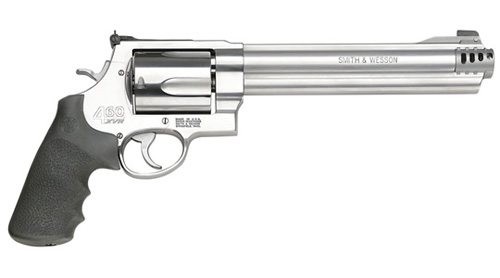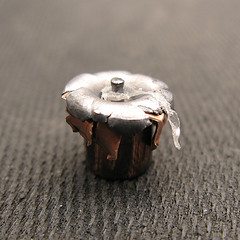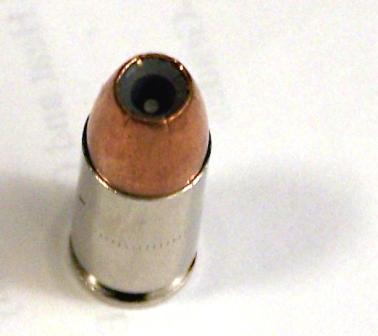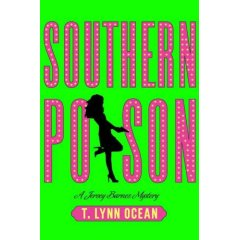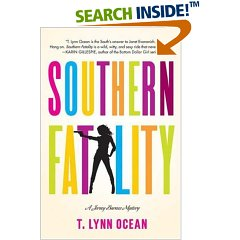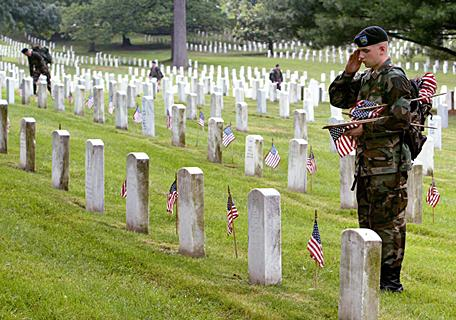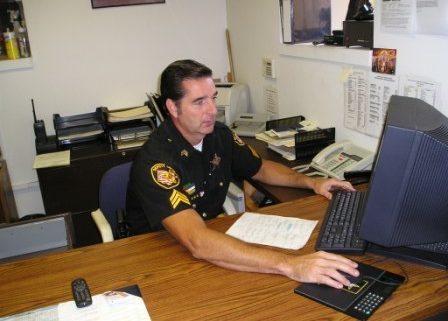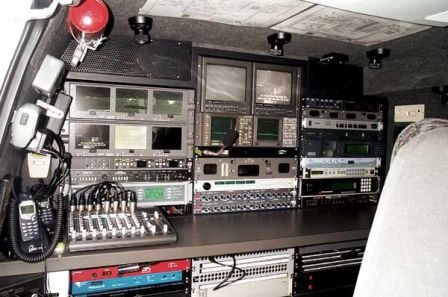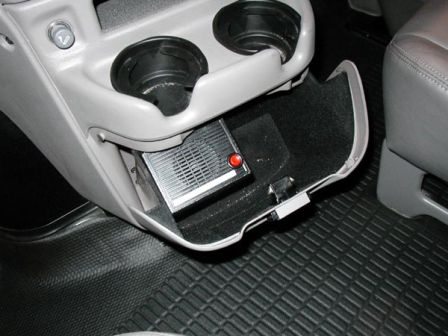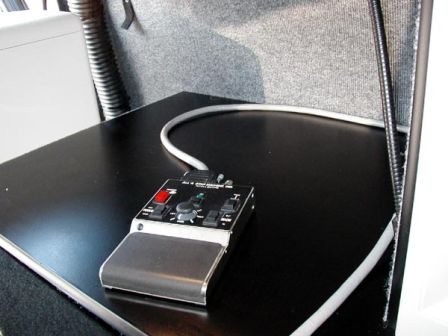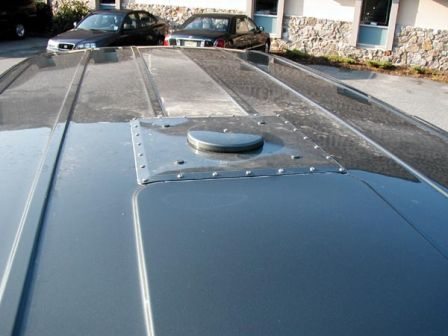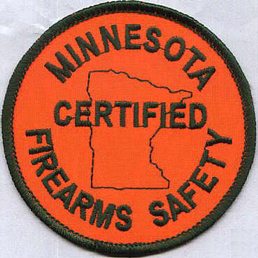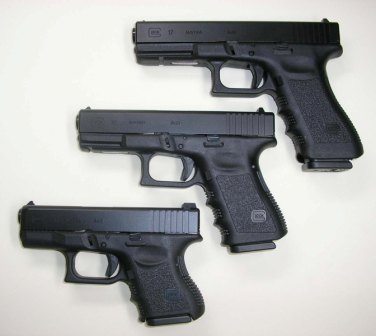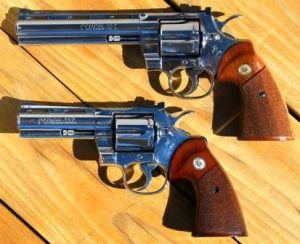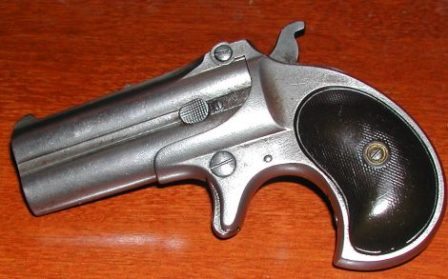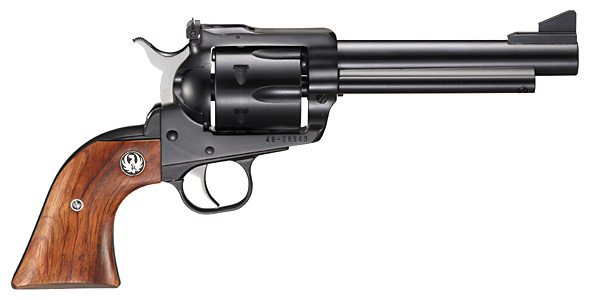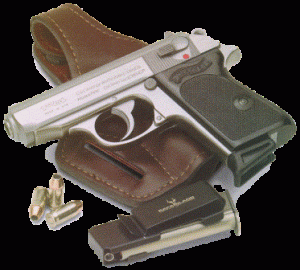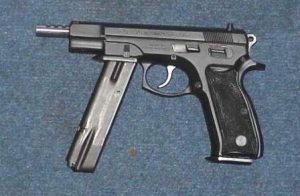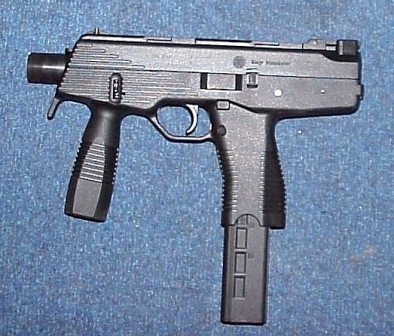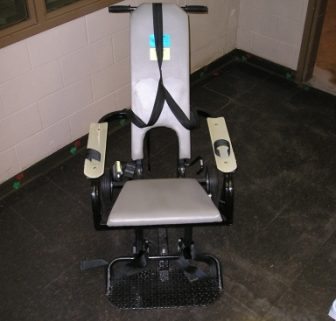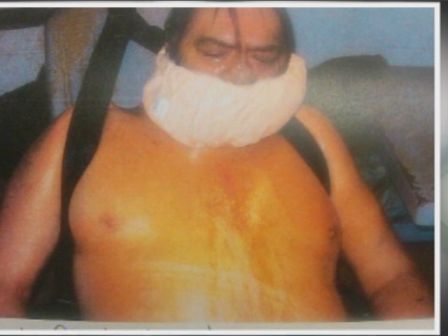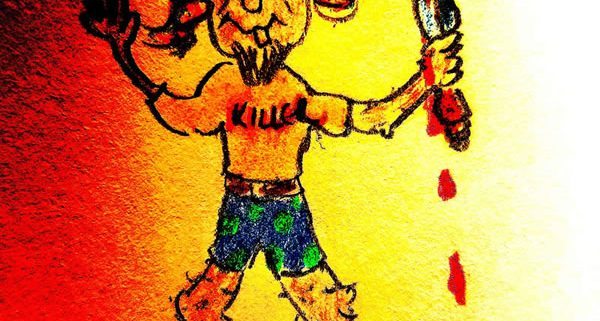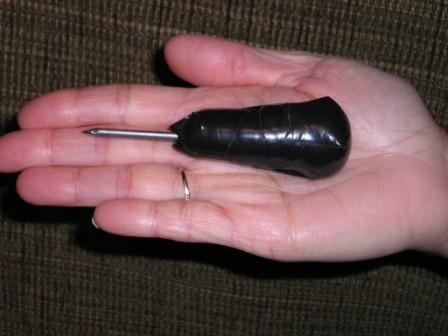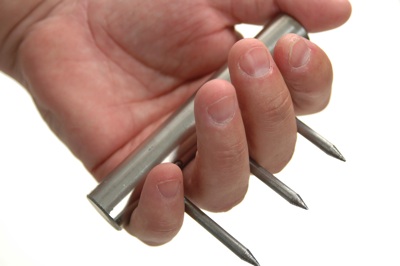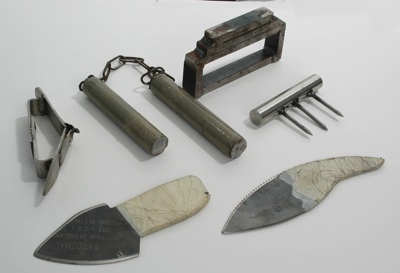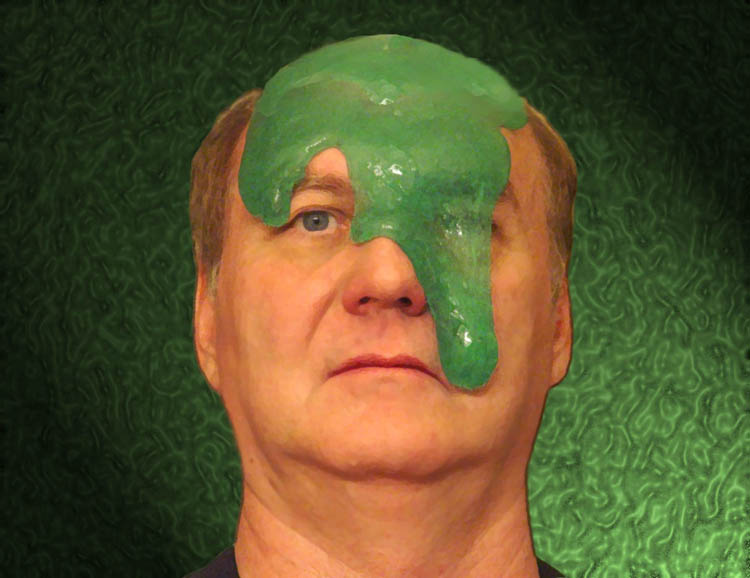Lori L. Lake is the author of Snow Moon Rising, a novel of survival set during World War II, which received a 2007 Golden Crown Literary Award as well as the 2007 Ann Bannon Popular Choice Award. She is the creator of the “Gun” series, which is a trilogy consisting of romance/police procedurals Gun Shy and Under The Gun and the adventure/thriller Have Gun We’ll Travel. Her first novel, Ricochet In Time, was about a hate crime. She has also written two books of short stories, a standalone romance, and edited two story anthologies. Lori teaches fiction writing courses at The Loft Literary Center, the largest independent writing community in the nation. She lives in Minnesota with her partner of 27 years and is currently at work on a mystery series and a How-To Book about the craft of writing. For more information, see her website at www.lorillake.com.
Part 2: Size DOES Matter
Everything about firearms indicates that size matters, especially in terms of cartridges, caliber, and bore.
All firearms are designed to take a specific kind of cartridge, and there are scores of different types and sizes of cartridges (or ammunition, which some people mistakenly refer to as “bullets”). You must use the correct ammunition in the firearm. You can be injured or even killed if the wrong cartridge is used. Why is this?
Even if you manage to load the cylinder of a revolver or get a particular cartridge into a gun’s chamber, if you attempt to fire ammo that is too big to fit through the barrel, the gun can literally blow up in your hand. If the cartridge is too small, the gun could misfire, or the bullet could tumble out in a completely inaccurate manner and miss what you’re aiming at.
Every gun has a specific-sized bore that takes a specific-size caliber. The bore is the diameter of the inside of the gun’s barrel through which the bullet travels when a gun is fired.
Caliber describes the size of the cartridge designed for a specific bore. The diameter of the barrel (the bore) is basically the same as the caliber the gun uses. The diagram below (which is not quite fully to scale) illustrates this:
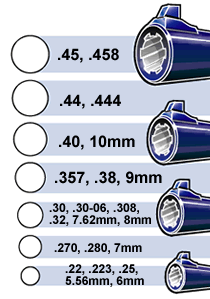
The caliber (size of bullet, left) has to fit the bore (right).
Caliber is expressed in terms of inches or millimeters. A .22 cartridge, for instance, is just a hair under a quarter-inch in diameter. The photo below gives an excellent visual of various calibers:
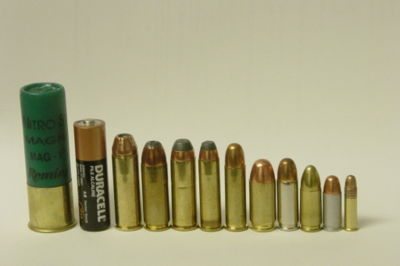
Common handgun cartridges (left to right): 3-inch 12-gauge magnum shotgun shell (for comparison), size “AA” battery (for comparison), .454 Casull, .45 Winchester Magnum, .44 Remington Magnum, .357 Magnum, .38 Special, .45 ACP, .38 Super, 9 mm Luger, .32 ACP, .22 LR
As you can tell, a bullet from, say, that wicked-looking .454 Casull is going to pack a real punch. Can you imagine how painful it would be to be shot with a bullet nearly as big as a double-A battery? Ouch! The .22 cartridge is much smaller in contrast.
But Where Does the *Bullet* Come From?
I keep using the term cartridge. You can also call it ammunition or a round. But the bullet is only part of a cartridge. Pistol and rifle cartridges have four basic components:

The case is the brass cylinder that all the other parts fit into.
The primer is the component that the hammer of the gun hits and ignites.
Powder is the chemical compound ignited by the primer that propels the bullet.
The bullet is a projectile, usually made of lead and other metals, that the powder fires out the barrel of the gun.
Pulling the trigger creates a simple chain reaction: the firing pin strikes, primer ignites to flare and ignite the powder, which instantly generates a huge volume of gas that creates so much pressure, the bullet explodes from the case and out the barrel.
And it all happens in a split second.
One More Thing about Ammo
Shotgun shells are different from rifle and pistol cartridges. In addition to a case, primer, and powder, there is also a wad of plastic or fiber separating the shot from the powder. The wad forms a seal to allow the gases from the burning powder to push the shot down the barrel in a uniform manner. Instead of a bullet, shells are filled with “shot” – small, round pellets usually made of lead or steel. A shotgun shell can contain anywhere from a half-dozen ball-bearing-type pieces of metal to 1,300 pellets. It can also contain a slug, which is a solid piece of metal.
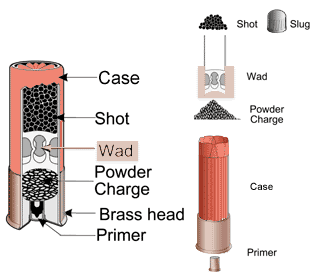
Police usually carry a shotgun in their cruisers, so if you have police characters in your stories, it’ll be important to use the correct terminology. If you’d like to learn a lot more about shotguns, this site walks you through all the angles: http://science.howstuffworks.com/shotgun.htm.
Using Firearms to Characterize
If you caught last week’s blog on “Guns, Guns, Guns,” you know that I believe the use of firearms in a crime novel can and should be used to characterize. Your gun choices add telling information about your story people. Some readers will not be able to tell a Kel-Tec from Manolo Blahniks, but for those well-versed in firearms (or shoes), name brands, styles, sizes, and other details do matter.
Lest you think that knowledge of guns and weaponry is not all that widespread, the National Rifle Association (NRA) has well over four million members. How many of them read crime fiction? I’ll bet a lot of them read thrillers, action, mystery, and adventure novels, as might the estimated thirty million hunters in the U.S. or the fifty million other Americans who own firearms. Men, in particular, notice the dearth of (in inaccuracy) of firearms lingo in novels, so if you want to increase your believability – and perhaps your audience – it’s important to have a good understanding of firearms and weaponry if you use them in your fiction.
You definitely do not want to bandy about terminology or firearm effects if you don’t know for sure that the details are correct. For instance, I recently read a manuscript where the author had terrorists carry Kalashnikovs down a crowded New York street on the way to the embassy they’re attacking. She had heard that Muslim extremists would probably use that sort of weapon.
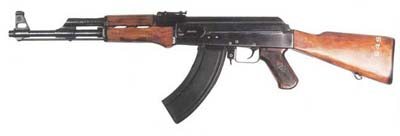
Unfortunately, a Kalashnikov is a big mother of a weapon, an AK-47 assault rifle recognizable by its half-wood/half-steel construction and the curved magazine that holds 30 rounds. It’s also three feet long and weighs well over ten pounds fully loaded. If your terrorists walked through Time Square carrying Kalashnikovs, not only would everybody they encountered run screaming, but very little time would pass before a horde of NY City’s Finest descended and took them out. (More on Kalashnikovs in Part III.)
So, when choosing firearms for our characters, we know we want to be specific, but we also want our choices to be accurate and supportable given the context of the story and the characters’ situations.
I don’t mean to be un-PC or offensive to anyone, but we do have to differentiate regarding size, and one of the general dividing lines is gender. Even though women are certainly taller these days, men still tend to have bigger, more muscled frames and possess larger, stronger hands. Men probably have a greater selection of firearms to choose from because they’re comfortable with the wide variety of BIG guns.
Good Guns For Guys
If your sleuth/detective is a cop (or professional PI working for a large organization), he will be expected to carry a standard type of gun during work hours, usually a large-frame, large caliber semi-auto. But off the job, for concealment purposes, most cops and pros leave their work weapon at home or in their locker and opt for much smaller, lighter guns. (Note: If he’s a police officer, he’s going to have to qualify at the range with any weapon he carries off-duty.)
And if your sleuth is an amateur detective or PI, what might he carry?
A guy who grew up around guns, who hunted game with family members, or who’s always been interested in firearms may own several handguns from which to choose. You’ll have to decide whether your sleuth keeps an arsenal – or just one gun for personal protection.
A fellow who’s not such a gun enthusiast may, indeed, carry exactly the same gun as his department requires. That’s less to keep track of. A Glock 19 or 20 weighs about 28 ounces unloaded. With a full magazine of ammo, you can add another 11 or 12 ounces. That’s 40 ounces – or 2.5 pounds – of clunky weapon to lug around. Glock duty sidearms aren’t the slimmer, smaller version (like the Glock 36, for instance). They’re bulky and hard to conceal. Same goes for all of the full-size, large-frame semi-autos: the Beretta, the Kimber 1911, the various Smith & Wessons, etc., and they’re even heavier than a Glock.
So he may choose a lighter, easier-to-conceal firearm. What’s his personality all about? Is he a tough guy? Unassuming? Mr. Milquetoast in public, but hell on wheels when up against the wall? Does he have money to burn on the most expensive types of weapons? Or does he need to conserve his funds? (Keep in mind that ammunition is not cheap. A box of 50 rounds of .45 cartridges will run you about $40 in most sporting goods stores).
Is he nostalgic and carries a Walther P-38 like the ones used on “The Man from UNCLE”?
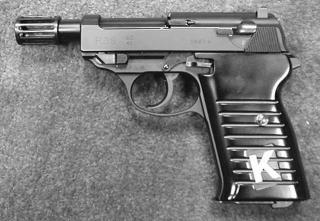
Or the .635mm Beretta 418 Ian Fleming had James Bond use in the first several books?
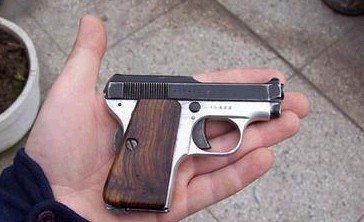
Or maybe the Walther PPK that Bond used most the time as his main gun?
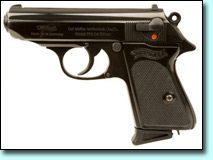
Or the bigger, meaner-looking 9mm Walther – complete with a silencer – used in the latest James Bond
movies?
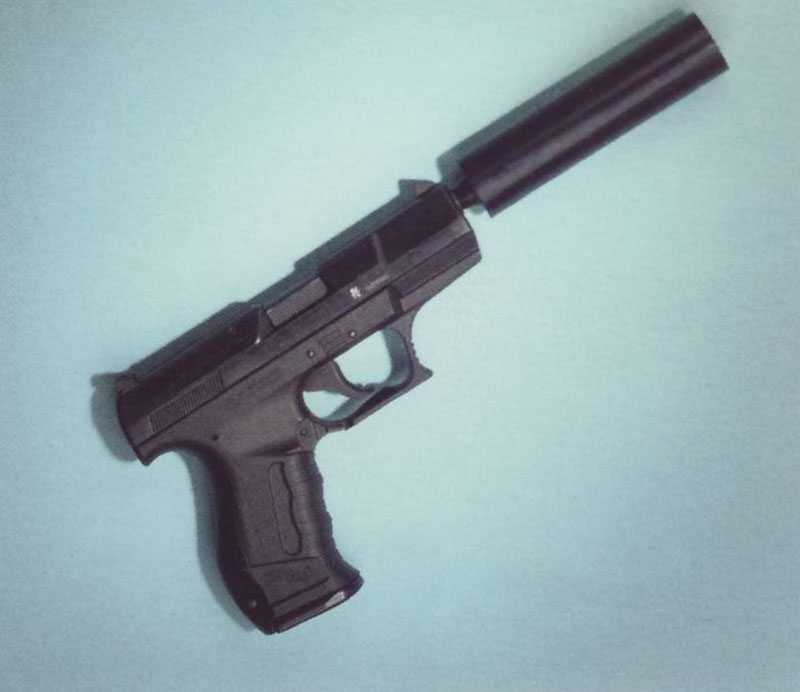
Robert B. Parker’s Spenser is often armed with a Smith & Wesson .38 Special (or .357 Magnum revolvers). He’s been carrying the .38 for so long that I suspect it might look like one of these older Model M60s:
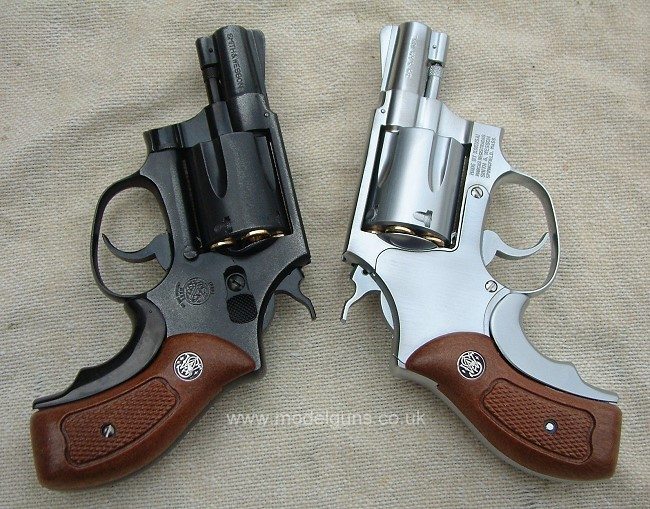
Spenser’s best bud, Hawk, usually has an arsenal, including his favorite great big stainless-steel .357 Colt Python:

Or how about Indiana Jones’ British double action revolver, a late 19th Century .455 Webley Mk VI, which, by the way, he’s still using in 1957! I just saw the new movie over Memorial Day weekend, and he got this gun out:
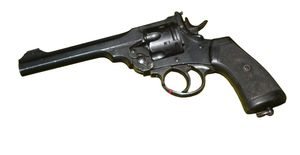
In Terminator 2: Judgment Day, Arnold Schwarzenegger’s character used a Winchester Model 1887 10-gauge shotgun in many of the battle scenes against the T-1000. It had a modified loop near the trigger that allowed Schwarzenegger to “flip-cock” the shotgun in a memorable and dramatic manner.
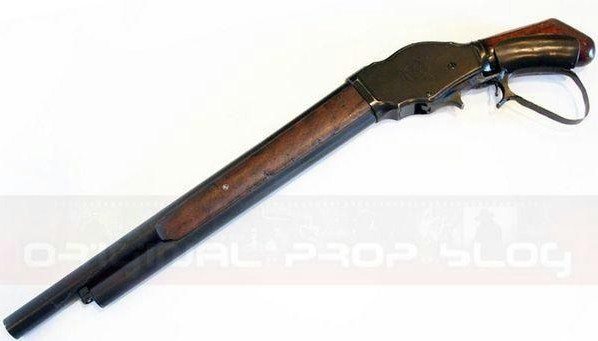
All of these guns characterize in interesting ways, don’t they? Somehow, they seem to *belong* with their user.
Most men have the advantage of an easier time carrying guns on their person. They often use concealment holsters worn under clothing or in front or rear pants pockets. There are holsters made for one or double shoulder, waistband, side, back, ankle, hip, belly, etc. (To see a huge array of examples: http://www.holsterss.com).
Good Guns For Gals
Whether it’s PC to admit or not, women’s upper bodies are often nowhere near as strong as men’s. Granted, some women do have plenty of strength to handle anything the big boys do, but the fact remains that guns and equipment can be problematic for women. My police friends complain about their duty belts, for instance, and often it takes a lot of adapting to get accustomed to firing the department-issue firearm. To make matters more difficult, women have wider hips and bustlines, so holsters can be uncomfortable.
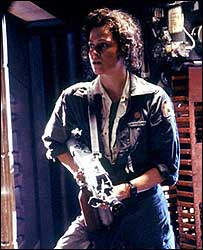
Sigourney Weaver in “Alien”
Not everyone is 5’11” like the actress Sigourney Weaver who pulled off the Ripley character carrying a massive plasma weapon that had to weigh a ton. And no women – and few men! – are anywhere near the size and strength of Lee Child’s 6’5” 240-pound Jack Reacher. (In fact, Reacher’s hand are probably so big, I bet he couldn’t even get his index finger comfortably into .22 or .25 handgun, much less a derringer.)
If I remember correctly, Nevada Barr’s Anna Pigeon and Sue Grafton’s Kinsey Millhone are both under 5’4”. Kinsey carries an unspecified .32. Stephanie Plum carries an unspecified .38 revolver in her purse (or forgets it in the cookie jar at home).
Lara Croft, from the popular game series (and in the movie) uses twin 9mm Heckler and Koch USP Match with speed-loader clips. When she ejects the magazines, a rack in her backpack comes out with a new set so she can sweep her arms behind and reload.
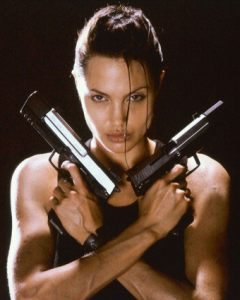
Angelina Jolie in “Lara Croft: Tomb Raider”
But how realistic is that for a female crime fiction sleuth, especially off-duty? Women may not have the advantage of suit jackets, underarm holsters, or big pockets and are likely to have interesting problems that many men might not have. Where doe she carry her weapon if she wants it concealed? On her person she can use ankle or thigh holsters. If she doesn’t mind the gun showing, she can wear it on a belt at her waist, but how tacky is that when you’re out with your boyfriend or taking your elderly mother to the dentist?
Women often carry their weapons in their purses, and this is where Glocks (and other guns without standard safeties) are problematic. There is no standard/external safety on a Glock. Experts will tell you that the “safety” consists of fully engaging the trigger, pulling it a full half-inch, and exerting 5 or 6 pounds of pressure before it fires. Having recently tested three different-sized Glocks by firing multiple rounds from each, I can tell you that the difference between the Glock trigger pull and, say, a .45 Colt revolver or a .40 SIG-Sauer is not great enough for me to have noticed.
So imagine this: Your sleuth sticks her big old bulky Glock in her dainty, evening purse. Along with the extra magazine of 9mm ammunition she might also want to carry, she’s lugging around three pounds of hardware. (Go get three pounds of hamburger, tuck that in your purse, and see how long it takes before your shoulder or arm is seriously fatigued. Of course you can always use the purse as a lethal weapon.)
Now, have your sleuth character sit in a booth with a reputed mobster she’s trying to cozy up to. It’s time to go to the powder room to check in with her handler. She reaches into her purse for her makeup case, accidentally hooks the Glock trigger on the case’s snap, and in the process of trying to disentangle it, the gun goes off. Of course it won’t hit the gangster. She’ll shoot herself in one elegantly panty-hosed foot. Or somebody else will get hit by the ricochet. Not good!
A heftier, bigger man may have less trouble stashing a Glock because he can tuck it into a holster in the back of his pants, stuff it in a trouser pocket, or use a shoulder holster. But nothing looks worse on a woman than that unsightly bulge just below the panty-line of her lovely evening gown.
A woman isn’t going to need the firepower of a Glock (9mm or .45 caliber, that is) anyway. She’s only carrying this gun around with her for personal, close-up, off-duty protection. So why not outfit her with a gun that not only suits her personality, but also has an external safety and is a size that she can comfortably carry? Here are three excellent purse guns:

.32 Beretta Tomcat 3032 – weighs about 16 oz. loaded with seven shells
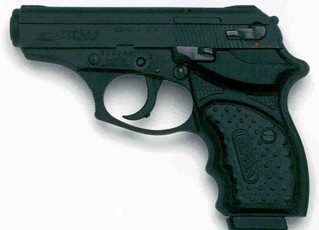
.32 Bersa Thunder Conceal Carry – weighs about 22 oz. loaded with seven shells
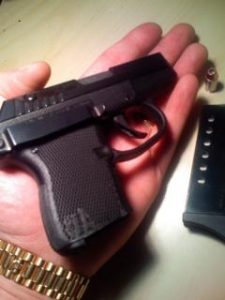
.32 Kel-Tec P-32 – weighs a mere 15 oz. loaded with seven shells
That Kel-Tec is made with of the same kind of molded polymer that Glocks are made of, which makes it very lightweight. And look how much cuter it is!
As you can see, these are all sub-compact handguns, but what more does a gal need out on a date, doing her shopping, or driving around town? Besides, why advertise that she’s carrying? These are easy to hide on one’s person – in a pocket, in a mesh ankle holder, or tucked in a fanny-pack. They’re terrific for athletic pursuits. If your sleuth is a jogger or biker, you can outfit her with a special waist holders that hug them close.
You’ll notice none of the purse guns are under .32 caliber. There are a lot of .22 and .25 caliber guns out there, but I’m of the opinion that they lack stopping power to put down a determined assailant. Also, their barrels are so stubby that they’re hard to sight which makes it difficult to accurately hit anything at more than spitting distance, especially because they’re so light that the recoil causes them to flip around with every shot you take.
But just in case you want to see a really dinky ladies gun that some women swear by and that travels well in a purse, here is one:

.25 American Derringer LM5 – weighs about 18 oz. loaded with five shells
See how there’s hardly any barrel to sight down? This gun – and all of the tiniest sub-compacts – are going to be very inaccurate weapons.
If your female detective – or your male detective, for that matter – wants more firepower and doesn’t mind some extra weight, these are good compacts that are still small and concealable, but that you may find are a lot easier to aim and hit the target:
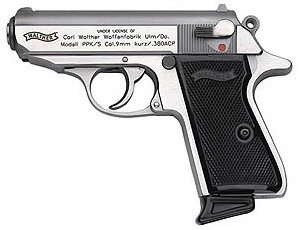
.380 Walther PPK/S – weighs about 26 oz. loaded with eight shells
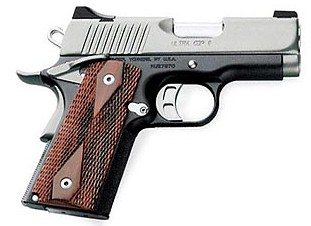
.45 Kimber Ultra Carry Pistol – weighs about 31 oz. loaded with eight shells
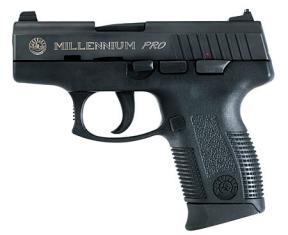
.380 Taurus Millennium Pro – weighs about 29 oz. loaded with 12+1 shells
You can also get that Taurus Millenium Pro outfitted as a 9mm, .40, or .45.
Lets Talk About Cost
The “purse” guns tend to cost in the range of $350 – $500. That .380 Taurus Millenium Pro was $399 at one website, $419 at another. The .32 Beretta Tomcat cost around $425. Other plain and simple but medium-small handguns range from $450 – $650.
The bigger semi-autos can cost from $550 to $1,500, depending upon workmanship and detailing. For instance, if you want a beautiful gun with character, check out this one which is only seven inches long, weighs 32 ounces, and can come with a laser grip:
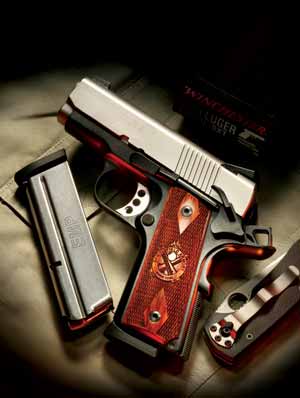
9mm Springfield 1911 subcompact
This gun is made of forged aluminum alloy with anodized black metal and a carved wooden hand grip. It’s a “pretty” gun . . . and you pay for that. This one runs around $1,200.
Seems like the bigger the gun or the more detailed, the more the prices rise. One site that shows good pictures and seems to quote representative prices is www.gundirectory.com.
A Note on Laser Sights and Night Lights
Some shooters think the world of laser sights, which can help you shoot with greater speed and accuracy. When you first begin training with a new gun (especially if it’s small with a very short barrel), a laser sight can help your aim as you get accustomed to the gun.

9mm Glock with a Laser Sight
With a laser, you can see precisely where you’ve pointed the muzzle of your gun, and if you’re off, it shows in a very big way. To find out more about lasers, go here: http://www.crimsontrace.com.
You can also get handguns outfitted with a flashlight at the end of the barrel like this .45 Heckler & Koch which is used by a lot of security forces around the world:
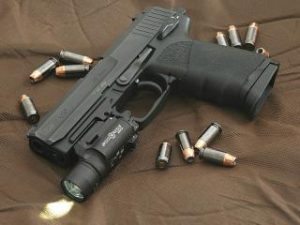
.45 Heckler & Koch
Don’t Forget Revolvers
I’ve focused on a lot of semi-auto guns, but rather than one of those or a smaller “purse gun” or “pocket piece,” perhaps your sleuth would do better with a revolver. With only a 3- or 4-inch barrel and a six-round cylinder, a revolver can fit unobtrusively in a lot of places on your person. Two examples would include the Smith & Wesson models below:

.38 Smith & Wesson “Snub-Nose” Model 36
.38 or .357 Smith & Wesson Model 66

S&W also makes this gun with a hammer that’s recessed so it’s less likely to catch on things in a purse or carry bag.
Some of the smaller .38 and .40 caliber revolvers are concealable. By the time you get to the steel-constructed .45s, such as the Ruger Redhawk, you’re getting into some size and weight. Fully loaded, this revolver below weighs slightly over four pounds. That’s some serious drag in your pocket or purse!

.45 Ruger Redhawk
Some Other Suitable Guns
Non-professional sleuths (incidental or amateur detectives) ought to have guns that suit them. Even if the weapon is one they’ll keep squirreled away in a shoebox in the closet (or in the cookie jar), why should it be a boring old Glock?
Maybe a .45 or 9mm or .357 is just too big for a woman with small hands. Take yourself to a gun store and ask the dealer to let you handle a variety of firearms. You’ll soon find a gun that you think is handsome, not too heavy, and that has a grip that fits your hand – or that fits the hand-size of your imagined sleuth.
The Kimber 1911 is a very cool gun and can be outfitted with a laser and night-sight. It’s a little big for an average woman’s hand, but it’d fit a man well.
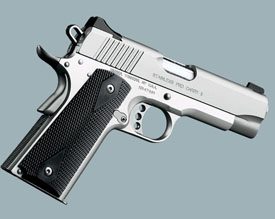
.45 Kimber 1911 Stainless Pro Carry II
The full-size 9mm Beretta, carried by cops and the military, is comfortable to fire, though it’s a fairly heavy gun.
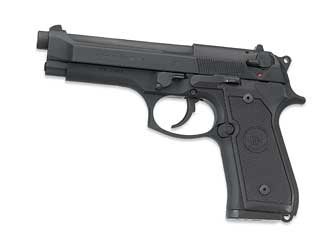
9mm Beretta 92FS
A durable and much-loved gun often passed from father to son (or father to daughter) is the .45 Colt Commander with the nice wood grip.
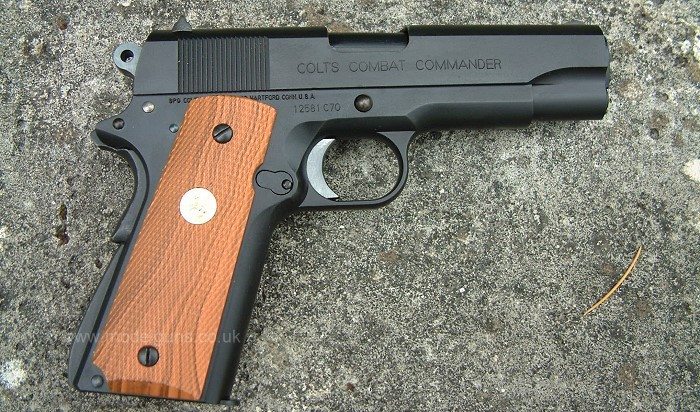
.45 Colt Combat Commander
Or maybe you should give your detective a long-barreled .44 Magnum like Dirty Harry carried.
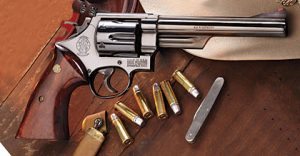
.44 Smith & Wesson Magnum Model 29 – The Dirty Harry Gun
I shot that one, and it had some kick! (Or maybe your gal is like Dirty Harry – giving her a gargantuan .44 would definitely say something about her personality.)
I discovered that I love SIG-Sauer handguns, I have medium-sized hands for a woman, but small compared to the average man’s hand, and the Glock is so wide and clunky. A comfortable gun is one that will allow you to shoot with much better accuracy, and my dream gun, the SIG-Sauer P239, fits in my hand perfectly.
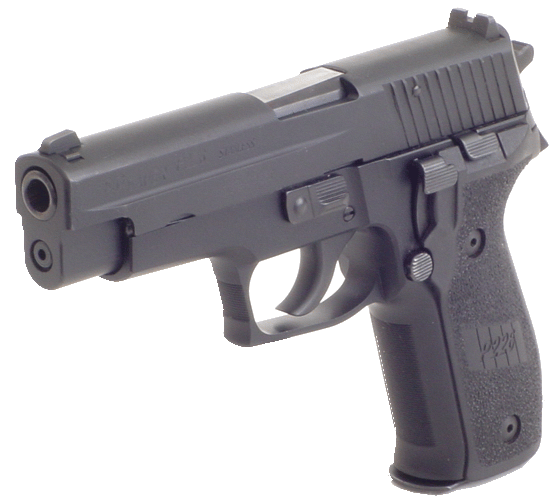
9mm SIG-Sauer P226
It’s smooth to operate and extremely durable (unlike a Glock, which *will* chip; you can slam a Sig around and it will not break), and since the Sig measures 7.7 inches overall and weighs only 29 ounces, it’s one of the lighter, ore compact medium-sized guns around.
For people who are curious about this, go to a gun store and compare the Glock to the Sig, or to any other gun. You will immediately see and feel that the Glock is bigger/clunkier. From side to side, the grip is much the same, but the butt is a bit larger, which is noticeable to women or men with smaller hands. It’s surprising how much a few millimeters in dimension make. The P226 has one of the most compact, comfortable handles of any 9mm featuring a double-column magazine, which makes it far superior to the Glock in terms of firing comfort.
My cop friends say that their Glocks jam periodically, but usually they’re quick and easy to clear. I recently fired a couple of boxes of rounds without a jam from a Glock 19, but my firing partner, a police officer, was firing a lot faster than I was, and with the heat of the gun, she had two jams. So Glocks are no strangers to jams – especially if you’re not religious about keeping them 100% cleaned. The Glock is a perfectly decent gun, but it’s a big, solid handful, and I’d much rather pack a SIG-Sauer P226 if you gave me a choice between the two.
Bottom Line: No woman character in her right mind would willingly carry and use a full-size Glock unless she had VERY big hands or at least quite a bit of finger/thumb spread. The gun is designed for a big, meaty, man’s hand. It doesn’t help that the gun is extra light either. The recoil is MUCH more significant than from some of the tighter, more compact, slightly heavier guns.
How Do You Write An Accurate Book? Research, research!
By now, you can see that there is SO MUCH VARIETY in firearms (and I haven’t even talked about rifles!). Really, if you’re a mystery writer and you’re ever going to have characters use any kind of weapons, you would be well served by visiting a well-stocked gun shop or wandering through a gun show. Ask questions, hold guns, examine ammo, work the slide, take the guns apart and put them back together, get a feel of the weight of various parts. Until you do that, I don’t know that it’s really all that easy to write a scene that feels “real.”
Up next week on Tuesday: Outfitting Your Crooks With Guns


